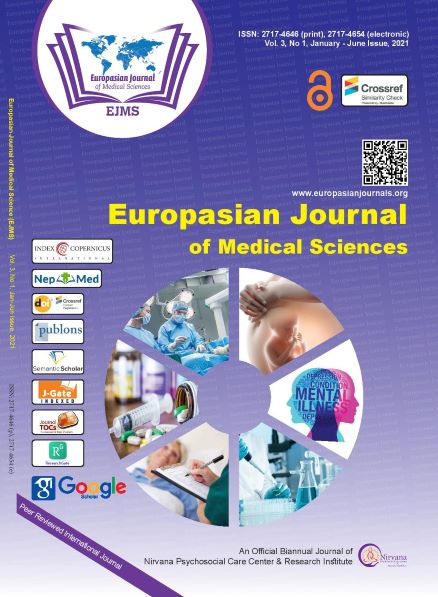Relaparotomy after Cesarean Section in a Tertiary Center
Abstract
Background: Relaparotomy after cesarean section is associated with
significant maternal morbidity and mortality which can be prevented with
proper precaution during the primary surgery. The objective of the study
was to determine factors associated with relaparotomy after cesarean
section.
Methods: A hospital based descriptive cross sectional study conducted
by analyzing the records of 3 years from 1st July 2017 to 30th June 2020,
among the women who underwent relaparotomy after cesarean section
at Paropakar Maternity and Women’s Hospital, Kathmandu.
Results: There were 21,270 cesarean sections among 64,475 deliveries
with the mean incidence of 32.6%. A total of 22 patients underwent
relaparotomy out of which 18 had their primary surgery performed at our
hospital i.e. 0.08% of the total caesarean section, and 4 cases were referred
from peripheries. 60% of primary surgery were done by residents and
the commonest indications of primary surgery were previous CS (36.3%)
and obstructed labor (27.2%). Primary PPH was the major indication
for laparotomy (31.8%) with mean interval from primary surgery of 4.7
hours followed by burst abdomen (22.7%) and secondary PPH (18.1%).
Hysterectomy was the commonest operative intervention done during
relaparotomy accounting for 45.4% followed by tension suture for burst
abdomen (18%). There were 2 maternal death among them which were
due to aspiration pneumonia following eclapmsia and DIC.
Conclusion: Relaparotomy has increased risk of adverse maternal outcome
but still is a lifesaving intervention. Early recognition, timely intervention
and multidisciplinary teamwork helps to decrease the complications
associated with it.
Copyright (c) 2021 Authors

This work is licensed under a Creative Commons Attribution 4.0 International License.
All articles published in EJMS are licensed under the Creative Commons Attribution 4.0 International License (CC-BY 4.0). The author/s as the copyright holder will retain the ownership of the copyrights without restrictions for their content under the CC-BY 4.0 license, and allow others to copy, use, print, share, modify, and distribute the content of the article even in commercial purpose as long as the original authors and the journal are properly cited. No permission is required from the author/s or the publishers. Appropriate attribution can be provided by simply citing the original article.
On behalf of all the authors, the corresponding author is responsible for completing and returning the agreement form to the editorial office. More information about the terms and conditions, privacy policies, and copyrights can be found on the webpage of the Creative Commons license privacy policy. https://creativecommons.org/licenses/by/4.0/




